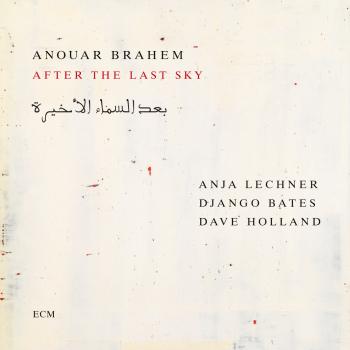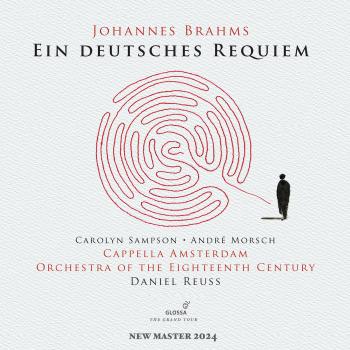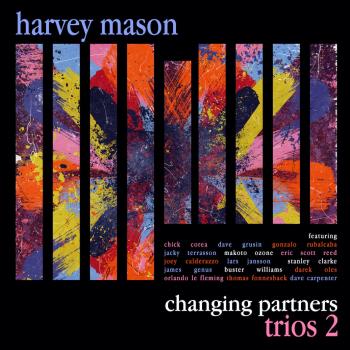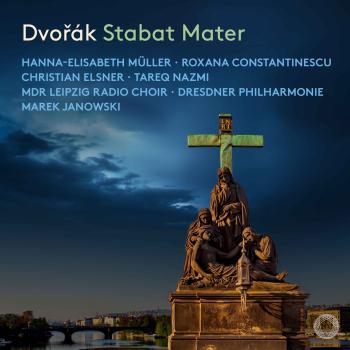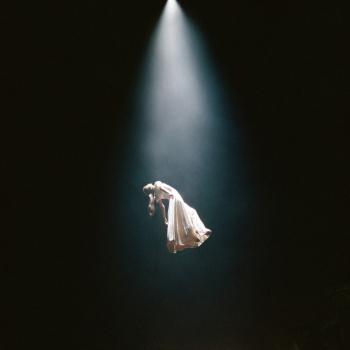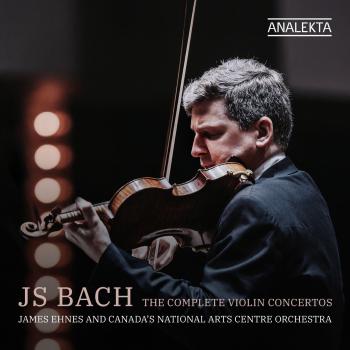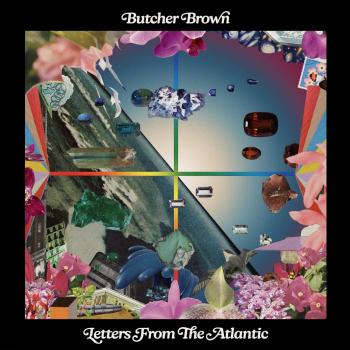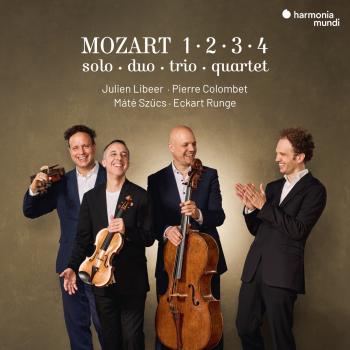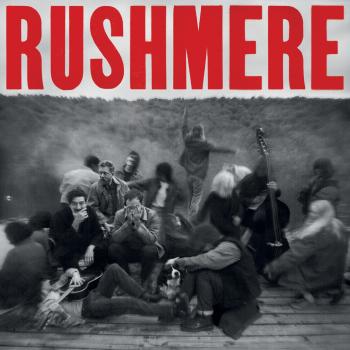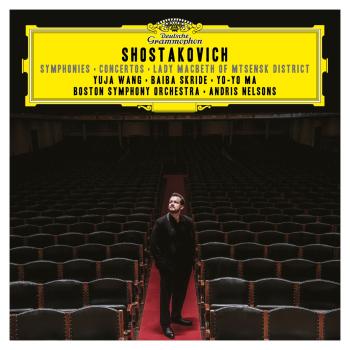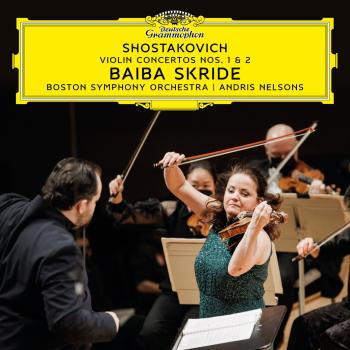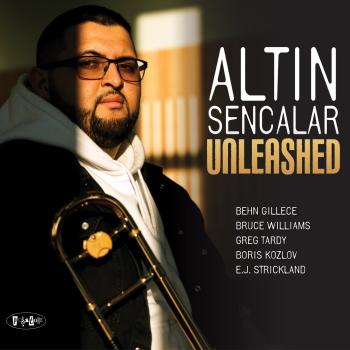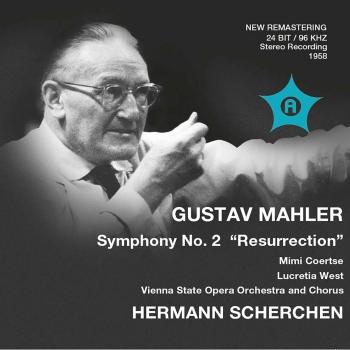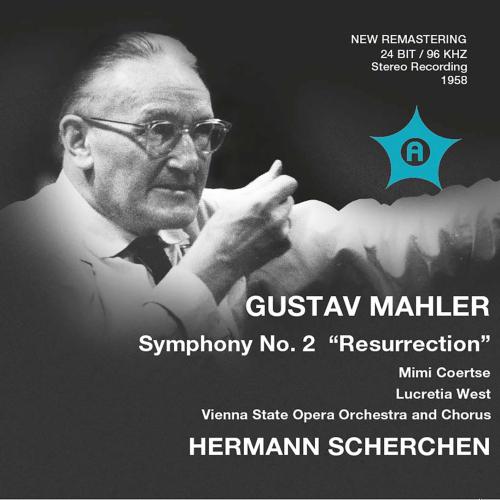
Mahler: Symphony No. 2 in C Minor "Resurrection" (Remastered) Vienna State Opera Orchestra and Chorus & Hermann Scherchen
Album info
Album-Release:
2020
HRA-Release:
11.12.2020
Label: Andromeda
Genre: Classical
Subgenre: Orchestral
Artist: Vienna State Opera Orchestra and Chorus & Hermann Scherchen
Composer: Gustav Mahler (1860-1911)
Album including Album cover
- Gustav Mahler (1860 - 1911): Symphony No. 2 in C Minor "Resurrection":
- 1 Mahler: Symphony No. 2 in C Minor "Resurrection": I. Allegro maestoso - Schnell 24:53
- 2 Mahler: Symphony No. 2 in C Minor "Resurrection": II. Andante moderato 11:54
- 3 Mahler: Symphony No. 2 in C Minor "Resurrection": III. In ruhig fließender Bewegung 12:52
- 4 Mahler: Symphony No. 2 in C Minor "Resurrection": IV. Urlicht 06:29
- 5 Mahler: Symphony No. 2 in C Minor "Resurrection": V. In Tempo des Scherzos 37:41
Info for Mahler: Symphony No. 2 in C Minor "Resurrection" (Remastered)
High Resolution Mastering of one of the best Mahler No. 2 in Stereo!
Mahler composed his Second Symphony over a period of seven years. He began the first and second movements in January of 1888, around the same time that Die drei Pintos—a comic opera left unfinished at death by Carl Maria von Weber that Mahler had taken on the task of completing in 1887—premiered in Leipzig. Although his work on the second movement Andante yielded only a few melodies, the composer managed to draft the first movement in a mere ten months. Nevertheless, 1889 presented him with a series of tremendous setbacks. Mahler’s father, mother, and sister Leopoldine all died within a few months of one another, and an unfavorable response met the premiere of his First Symphony on 20 November 1889. Perhaps for these reasons—not to mention the demands of the conducting position he then occupied at the Hungarian Royal Opera—Mahler put aside all composition. He did not return to the project that would become Symphony no. 2 until the summer months of 1893. During the intervening years, the composer would not only relocate from Budapest to Hamburg in order to take up a conducting position at the latter’s Stadttheater (City Theater), but attempt to have the first movement performed and published as an independent symphonic poem entitled Todtenfeier (Funeral Rites).
Resumption of work on the Second Symphony coincided with the composer’s continued interest in Des Knaben Wunderhorn (The Boy’s Magic Horn) settings as early as 1887. He commenced writing the song “Des Antonius von Padua Fischpredigt” (“St. Anthony of Padua’s Sermon to the Fishes”) for voice and piano in July of 1893 while simultaneously creating a purely orchestral version of the same material; the latter, combined with a trio section based on ideas absent from the vocal rendition, became the symphony’s third movement. Likewise, “Urlicht” (“Primal Light”), another Wunderhorn text set the previous year for voice and piano, received orchestral accompaniment, and the composer also expanded the Andante’s themes (abandoned as sketches back in 1888) into a complete movement. These would become the fourth and second movements respectively. Thus, Mahler had finished the internal movements by August of 1893, and during the following winter, he revealed to his friend Josef Foerster that he had begun a new symphony.
Yet the piece still lacked a finale. Inspiration for this movement did not come to Mahler until he attended the funeral for his fellow Hamburg conductor Hans von Bülow (1830-1894) on 29 March 1894. Even though he had already been considering a choral close for the symphony, this somber event provided the composer with a textual basis for the last movement when the words of Friedrich Gottlieb Klopstock’s (1724-1803) “Auferstehen” (“Resurrection”) sounded from the organ loft. (The poet intended these lines for singing to a pre-existing melody, such as the Lutheran congregational hymn Jesus Christus, unser Heiland [Jesus Christ, our Savior], though the actual tune Mahler heard remains unknown). To the first two stanzas of Klopstock’s lyric the composer appended twenty-seven lines of his own devising, and with this poetry in hand, Mahler created a monumental movement before three months had passed. ...
Mimi Cortese, soprano
Lucretia West, contralto
Vienna State Opera Orchestra
Vienna State Academy Chamber Choir
Hermann Scherchen, conductor
Digitally remastered
Hermann Scherchen
Largely self-taught as a musician, Hermann Scherchen joined the Blüthner Orchestra as a viola player in 1907, and played with the Berlin Philharmonic Orchestra from 1907 to 1910. A performance in 1911 of Mahler’s Symphony No. 7 under Oskar Fried, in which he participated with the Blüthner Orchestra, left a deep impression. During the same year he assisted Schoenberg in the preparation for performance of Pierrot Lunaire, and made his debut conducting this work on the tour that followed its first performance in Berlin. Scherchen conducted Mahler’s Symphony No. 5 in Berlin in 1914, the year in which he was appointed conductor of the Riga Symphony Orchestra; however, following the outbreak of World War I he was interned and remained in Riga throughout the war. During this period of enforced confinement he learnt Russian, taught and composed.
Following his return to Berlin in 1918 Scherchen quickly became active in several different but related fields: he formed the Scherchen Quartet, directed a workers’ choir, founded the New Music Association (Neue Musikgesellschaft), and from 1919 published the radical musical magazine Melos. He was appointed conductor of the Grotrian-Steinweg Orchestra of the Leipzig Konzertverein in 1921, and in the following year both succeeded Wilhelm Furtwängler as conductor of the Museum Concerts in Frankfurt and became conductor of the Winterthur Musikkollegium in Switzerland. Following the formation of the International Society for Contemporary Music in 1923 Scherchen appeared regularly at its festivals of new music, directing an amazing number and variety of new works. He appeared as a guest conductor throughout Europe, and especially in London, during the 1920s and 1930s: in 1936 he conducted the world première of Berg’s Violin Concerto, in Barcelona. In addition he edited the new music journal Ars Viva between 1933 and 1936 and taught regularly. In 1928 Scherchen was appointed chief conductor of the East German Radio Orchestra at Königsberg, becoming principal conductor in 1931. As a convinced anti-fascist, he left Germany in 1933 following the assumption of power by the National Socialist Party, and settled in Switzerland where he lived for the rest of his life.
During World War II Scherchen remained active as a conductor, performing regularly in Switzerland (between 1944 and 1950 he was chief conductor of the Zürich Radio Orchestra) and occasionally in Greece. Thus after the end of the war he was well placed for new opportunities: however although he was offered the positions of conductor of the Berlin Philharmonic, Leipzig Gewandhaus and Leipzig Radio Symphony Orchestras, and of the Berlin State Opera, as well as the directorship of the Leipzig Conservatory, he turned them all down. In 1950 he suffered a series of personal and professional reverses, some of the latter being associated with his life-long support for socialist ideas, which almost drove him to suicide. Fortunately he soon met his future fifth wife, Pia Andronescu, by whom he was to have five children, and professionally he began his long association with the Westminster record company, maintaining this until 1965, when the company suffered a severe financial crisis. The recordings which he made for Westminster established his name internationally.
During the 1950s and 1960s Scherchen appeared once again as a guest conductor in Europe, frequently conducting programmes of challenging or new music: his direction of Schoenberg’s opera Moses und Aron in Berlin in 1959 was of central importance in promoting this work internationally. In addition he taught conducting in Venice and Darmstadt and founded the Ars Viva imprint for the publication of new music. His final permanent appointment lasted only for one year, between 1959 and 1960, when he served as chief conductor of the North West German Philharmonic Orchestra, Herford. Scherchen did not make his American debut until 1964, when he conducted in Philadelphia and New York, despite by then being extremely well known through his recordings. He died several days after conducting Malipiero’s L’Orfeide in Florence.
Scherchen was a figure of central importance in twentieth-century musical life, his continuing espousal of new music making him one of its foremost proponents in Europe. As a conductor he held a deep respect for the composer’s written text, for instance seeking to perform Beethoven’s symphonies at the tempi indicated in the manuscripts, an unusual practice for the time. Technically he believed that a conductor should commence work with an orchestra only when every aspect of a score had been completely memorised, and could be rehearsed from memory. Film of Scherchen conducting shows him to have possessed a very simple and clear beat. Yet he could summon up performances of raw power as well as of great character. He saw the conductor’s job very much as animating the music beyond the notes, writing in 1935, ‘A music devoid of any emotion, of any aesthetic pleasure or spiritual clarification may be of interest to the professional, but has no meaning whatsoever to the normal listener.’
His recorded legacy consists of numerous commercial as well as radio recordings. Virtually every performance that he conducted, whatever the circumstances, was of interest. To quote the producer of many of his Westminster recordings, Dr Kurt List: ‘With Scherchen the result is never boring, nor does it leave you indifferent. If you think of the many colourless conductors around the world, I believe that one has to take Scherchen as he is: a voluntarily personal stylist who nevertheless always throws an interesting light on things, even if this light is wrong!’ In many ways Scherchen, through his insistence upon fidelity to the text, foreshadowed the period performance practice movement of the end of the twentieth century. His recordings of music by Bach, Handel, Haydn, Beethoven, Berlioz and Mahler remain important milestones in the history of recorded music, as do those of music by composers who were his contemporaries such as Schoenberg, Berg and Webern. He saw music as a living continuum between the old and the new, which he sought to bring together as often as possible.
This album contains no booklet.

